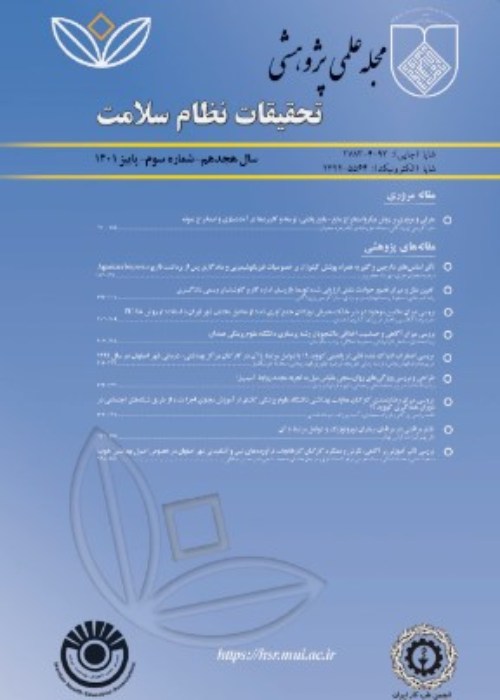Karkheh River Water Quality Using Multivariate Statistical Analysis and Qualitative Data Variations
Author(s):
Abstract:
Background
The spread of urbanization in floodplains as well as increase of industrial and agricultural activities in river discharges may lead to water pollution by physical، chemical and biological pollutants. One of the major concerns in monitoring the water resources system is indentifying major quality parameters and determining a relationship between physical and chemical parameters. This is important because the physical parameters are usually related to the natural characteristics of the river basin، while chemical parameters are associated with human-made pollution resources. Thus، if there is a high correlation between these two groups of parameters، it could be concluded that the source of both parameters are identical. However، to achieve this goal، costly and time consuming instrumental techniques and intensive laboratory efforts might be required. Methods
To determine the major quality parameters that cause water pollution in Karkheh River، statistical principal components analysis (PCA) method was employed. Moreover، canonical correlation analysis (CCA) was used to find the relationships between physical and chemical parameters. In this study، discharge rate (Q)، turbidity (Turb)، temperature (T)، dissolved oxygen (DO)، total suspended solids (TSS) and electrical conductivity (EC) were selected as representative parameters for the physical characteristics of the river water quality. In addition، pH، 5-day biological oxygen demand (BOD5)، chemical oxygen demand (COD)، total phosphorous (TP) and total nitrogen (TN) were chosen as representatives of the river chemical attributes. These two groups of quality parameters were measured along the Karkheh River in 18 monitoring stations from March 2006 to March 2007. Findings
Results of PCA analysis indicated that all the selected chemical and physical parameters of Karkheh River were of high importance. Further investigations indicated that in CCA analysis the first three canonical correlations were 0. 896، 0. 848 and 0. 593، respectively، suggesting that turbidity، DO and TSS were three dominant physical parameters in all the canonical variables، whilst BOD5، COD، TP and TN were highly scored among the chemical parameters. Conclusion
According to the CCA results، it can be implied that human activities are the source of the physical and chemical parameters of the river. The utilized statistical methods in this study can be used as an appropriate decision support system for water sector managers regarding water quality management of the river basin when large complex water quality data are involved.Keywords:
Language:
Persian
Published:
Journal of Health System Research, Volume:8 Issue: 7, 2013
Pages:
1280 to 1292
magiran.com/p1137710
دانلود و مطالعه متن این مقاله با یکی از روشهای زیر امکان پذیر است:
اشتراک شخصی
با عضویت و پرداخت آنلاین حق اشتراک یکساله به مبلغ 1,390,000ريال میتوانید 70 عنوان مطلب دانلود کنید!
اشتراک سازمانی
به کتابخانه دانشگاه یا محل کار خود پیشنهاد کنید تا اشتراک سازمانی این پایگاه را برای دسترسی نامحدود همه کاربران به متن مطالب تهیه نمایند!
توجه!
- حق عضویت دریافتی صرف حمایت از نشریات عضو و نگهداری، تکمیل و توسعه مگیران میشود.
- پرداخت حق اشتراک و دانلود مقالات اجازه بازنشر آن در سایر رسانههای چاپی و دیجیتال را به کاربر نمیدهد.
دسترسی سراسری کاربران دانشگاه پیام نور!
اعضای هیئت علمی و دانشجویان دانشگاه پیام نور در سراسر کشور، در صورت ثبت نام با ایمیل دانشگاهی، تا پایان فروردین ماه 1403 به مقالات سایت دسترسی خواهند داشت!
In order to view content subscription is required
Personal subscription
Subscribe magiran.com for 70 € euros via PayPal and download 70 articles during a year.
Organization subscription
Please contact us to subscribe your university or library for unlimited access!


